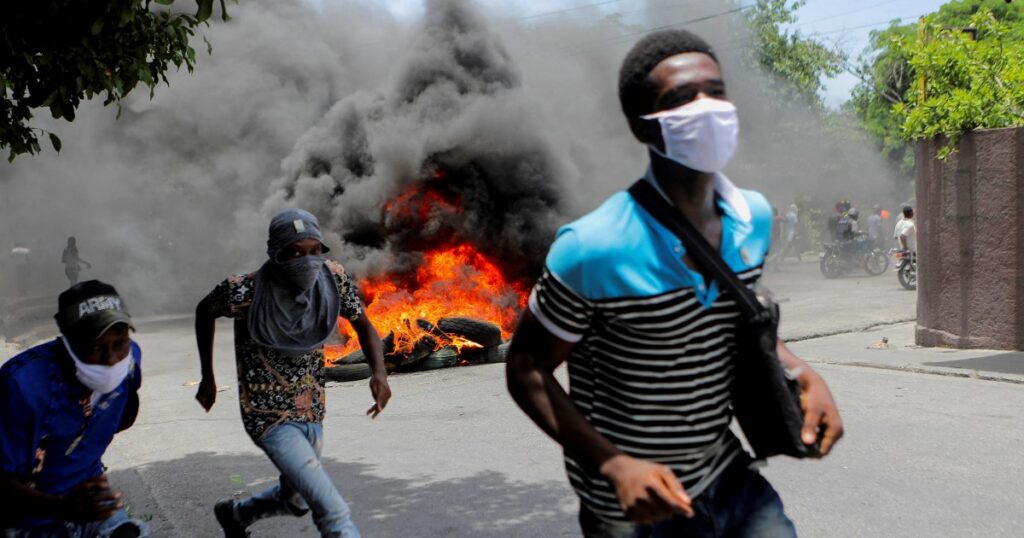In March, amid a flare-up in gang violence that prompted the declaration of a state of emergency in Haiti, the United States made it identified that – as normal – Haitians fleeing for his or her lives wouldn’t be welcome on US shores.
To that finish, preparations have been being made to cope with a possible mass maritime migration of US-bound Haitian refugees by diverting them to the naval base at Guantanamo Bay, which is situated on occupied Cuban territory and is after all higher identified for its unlawful US prison-cum-torture centre.
A March 13 CNN article quoted General Laura Richardson, head of the US Southern Command, on the army’s preparedness for such an eventuality: “We did a full walkthrough of our contingency plan on Gitmo last summer with all of the interagency and all of my components.” The Stars and Stripes army journal supplied further reassurance from Richardson: “Everything is refreshed – the equipment, everything is ready to go.”
And whereas media reviews have been cautious to specify that intercepted Haitians could be despatched to a migrant processing facility in Guantanamo that’s separate from the advanced that homes “terrorist suspects”, it’s exhausting to see the US’s “contingency plan on Gitmo” as something however yet one more racialised carceral endeavor.
As it so occurs, this could not be the primary time the US blocked Haitian refugees from getting into the nation by transport them to Guantanamo Bay. In truth, Haitians have been the naval base’s first company within the Nineties, with hundreds indefinitely detained as they tried to flee Haiti within the aftermath of the 1991 US-backed army coup towards President Jean-Bertrand Aristide – to not be confused with the 2004 US-backed coup towards the identical man.
This was almost a decade previous to the launch of the “war on terror” in 2001 and the following inauguration in Guantanamo Bay of everybody’s favorite offshore penal colony and authorized black gap. In 2010, Guantanamo was as soon as once more designated as a possible holding pen for Haitian refugees from that yr’s apocalyptic earthquake, which killed greater than 200,000 individuals.
The predicted maritime exodus didn’t happen however, simply in case, a US Air Force cargo aircraft was instantly dispatched to fly for 5 hours a day over the devastated land, broadcasting a message in Creole from Raymond Joseph, the Haitian ambassador to the US: “Listen, don’t rush on boats to leave the country … Because, I’ll be honest with you: If you think you will reach the US and all the doors will be wide open to you, that’s not at all the case.”
Then, as now, the US’s “closed-door” angle vis-a-vis Haitian refugees could be a notch much less mind-blowingly repulsive had the US not helped itself by way of Haiti’s personal doorways for effectively over a century – and never simply by way of the aforementioned coups.
Jonathan M Katz, a former Associated Press correspondent within the Haitian capital of Port-au-Prince, writes in Foreign Policy how “in the 1910s, US elites began setting their sights on Haiti” – after the nation was compelled to take out big loans from US and different worldwide banks to pay reparations to France for the crime of self-liberation from French colonial rule and slavery.
Then in 1914, utilizing the mortgage compensation challenge as a pretext, US Marines descended upon Haiti’s central financial institution in Port-au-Prince and spirited “half the nation’s gold reserves” off to Wall Street, as Katz particulars. The ensuing turmoil in Haiti, in flip, served as an excuse for an “all-out invasion” by the US, which went on to occupy the nation for almost twenty years and “reimposed forced, unpaid labor, performed at gunpoint, to build a road system to ensure military and commercial control”.
Sounds type of like slavery.
Nor did Haiti get a break from the imperial chokehold in later many years, when within the identify of combating communism the US lent its assist to Haitian despots François “Papa Doc” Duvalier and Jean-Claude “Baby Doc” Duvalier, who killed tens of hundreds of individuals and imprisoned and tortured many extra.
They say outdated habits die exhausting – and, true to type, the US has continued to gasoline each bodily and financial violence in Haiti to this present day. Most of the firearms and ammunition in Haiti come from the US, which is a vital context when considering the present gang brutality that has displaced greater than 360,000 individuals. Thousands have been left homeless, and the specter of famine looms.
As for the ravages of US-backed capitalism in Haiti, recall the WikiLeaks revelation in 2011 that the Barack Obama administration had agitated to dam a rise within the minimal wage for Haitian assembly-zone labourers incomes 31 cents per hour.
In different phrases, it’s not troublesome to see why a complete lot of Haitians over the previous century-plus have discovered their nation unlivable. And the US’s position in rendering it so simply makes the current Guantanamo “contingency plan” all of the extra felony.
It stays to be seen, for the second, whether or not historical past is repeated on this case and Haitian refugees are as soon as once more packed off to a US army base on occupied Cuban land. But no matter occurs, there’s sadly no contingency plan for an finish to imperial hypocrisy.
The views expressed on this article are the creator’s personal and don’t essentially mirror Al Jazeera’s editorial stance.
https://www.aljazeera.com/opinions/2024/3/31/the-us-contingency-plan-send-haitians-to-guantanamo-again?traffic_source=rss


